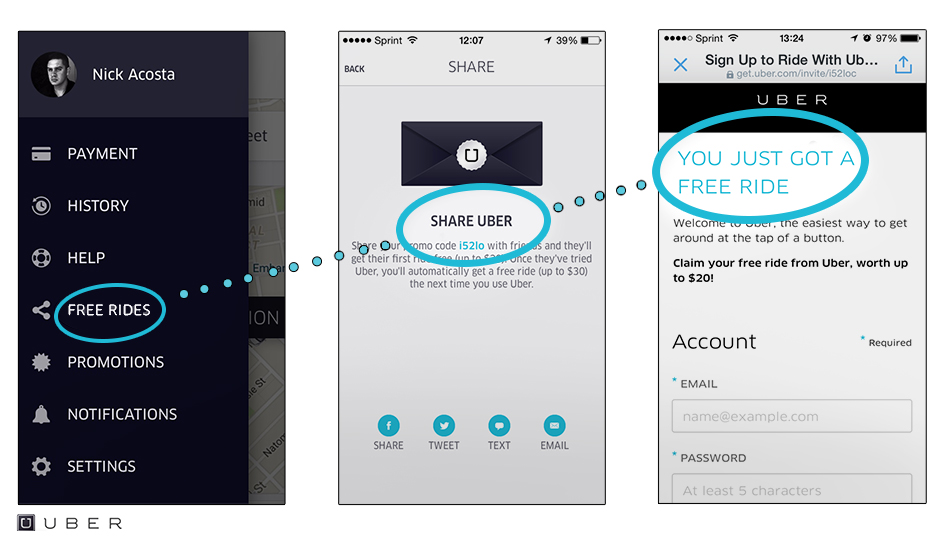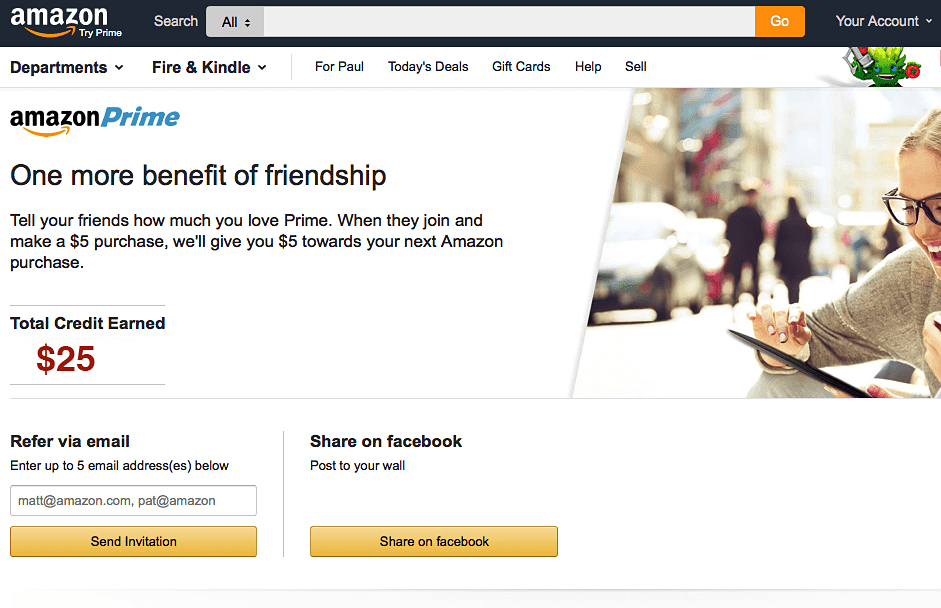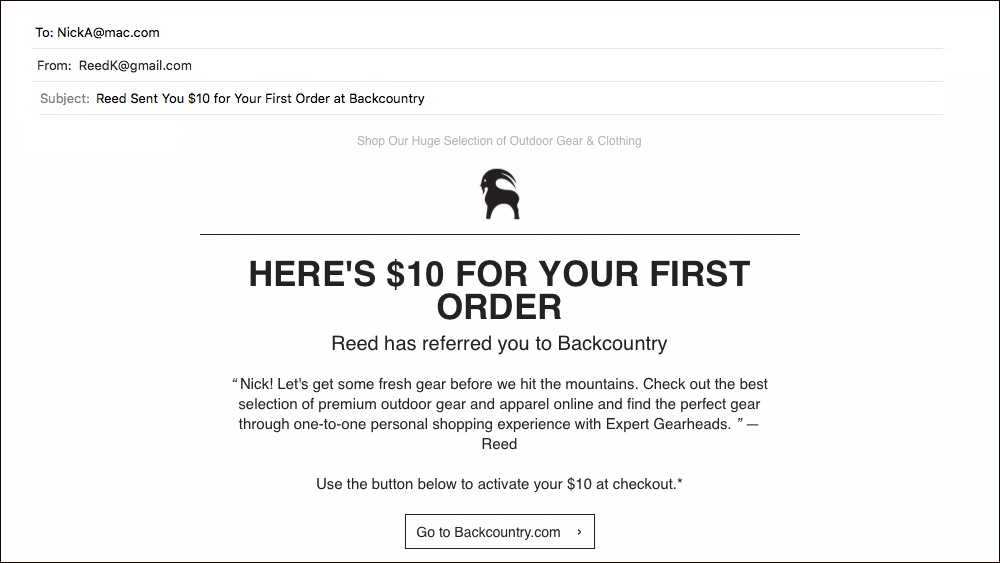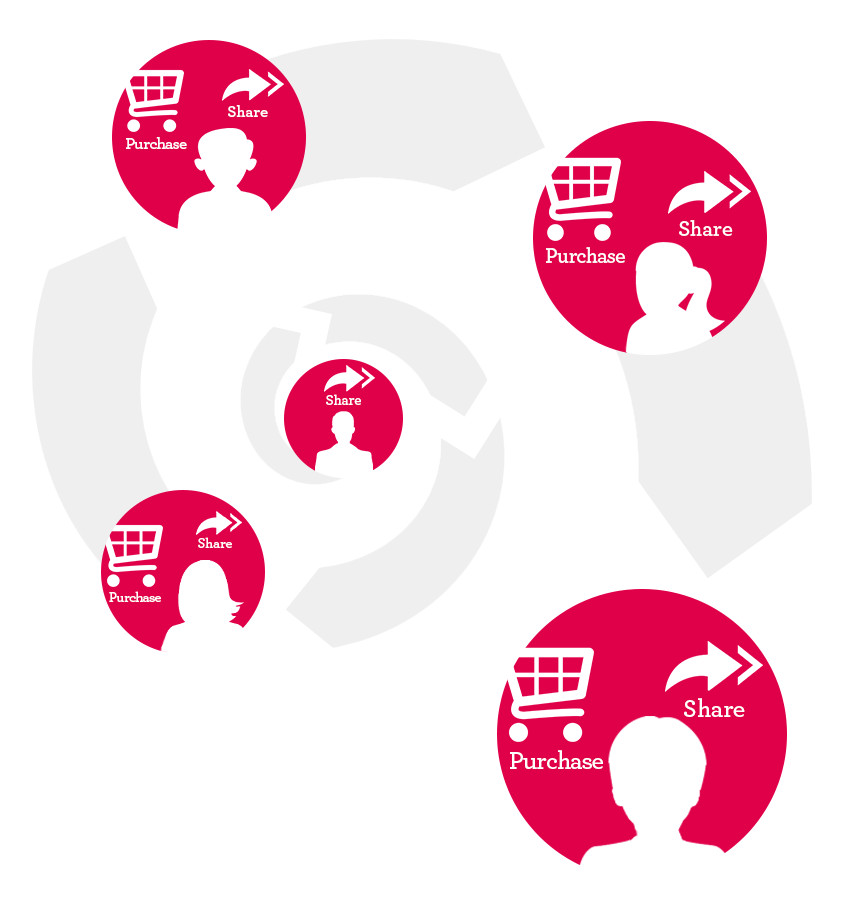For lots of marketers, referral marketing is an afterthought. They figure it’s not worth bothering if they’re not going to hit the viral growth and blockbuster numbers of companies like Airbnb and Paypal.
That’s a huge mistake.
Referral lets you reach people you otherwise couldn’t, either because they’re scared off by your prices or aren’t being targeted by conventional marketing channels. But it only works if you give it the attention it deserves.
The key is to look at your referral marketing program from the customer’s perspective and ask yourself how you can make sharing and accepting referrals a no-brainer.
At Extole, we’ve identified the five key strategies you need to follow to do that.
1. Push Referral Early and Often
Too many marketers treat their referral program like a state secret. They set up one landing page, tuck a button away on the home screen, and are shocked when people don’t share the goods. You need to present the referral opportunity early and often if you want your customers to actually share.

Take Uber. Uber has one of the strongest referral programs out there, and it’s helped fuel the company’s aggressive expansion. The way they’ve done so is simple and incredibly effective—they place the referral program front and center. The moment you log into the app for the first time, a pop-up encourages you to refer. Every subsequent time you open the app, you see the opportunity to refer right there on the main menu.
The best referral marketing programs build on everyday advocacy. They make the sharing experience a part of the larger, day-to-day interaction with the brand. It begins simply—customers have to know they can share, and be reminded frequently before they actually do it.
2. Design Referral to be Seamless and Easy
Design isn’t just about making your referral program look nice. That’s something savvy internet users simply expect these days. The important part of design is to make both sides of the referral process as easy and frictionless as possible.
Think about why Amazon was able to revolutionize online shopping—it wasn’t just their huge inventory. They also made it possible to buy online with a single click, and have it delivered two days later. There’s nothing easier than that.
Too many referral programs, on the other hand, make customers jump through unnecessary hoops. They force customers to type in referral codes by hand, or turn away potential advocates by demanding they create an online account. Those extra steps are opportunities for people to go do something else.
Design is all about enhancing the customer experience. Referral marketing is so powerful because it taps into the implicit trust we have in word-of-mouth recommendations from friends. A well-designed referral program needs to be geared toward making the basic, human action of sharing as easy as talking to a friend.
3. Make Referral Happen Everywhere
There’s a constantly increasing variety of ways consumers today can engage with your brand—laptops, tablets, smart phones. But the one constant is that no matter what, they demand immediate gratification. It’s not just a nice-to-have—it’s the bare minimum expectation.
Extole’s internal research shows that while 18% of referrals are sent from mobile, 39% convert on mobile. Advocates and their friends aren’t necessarily on the same device.
Plus, people don’t just stick to one or another. Someone might send a referral from their laptop at home one day. The next, they might be out to lunch with a friend who asks about your product, and they’ll send a referral from their phone.
People need to be able to refer whenever the mood strikes. They could be at home, on the bus, at a bar—wherever. It’s your job to meet them wherever they might be and ensure that it’s always possible.
4. Test Different Reward Structures

Quick question, which of these rewards do you think would prompt advocates to share the most referrals: $20, $15, or $10?
You probably wouldn’t hesitate to say $20. But you’d be wrong. In testing by an online marketplace, the $10 reward actually outperformed both.
That experiment shoots down a common referral marketing myth: that people only advocate for the reward. The fact is, no one will refer a subpar product just for the reward. But the right incentive can create a sense of urgency and make them want to refer right now, lest they miss out.
Optimizing your rewards is all about finding the tipping point that makes referral most appealing. Too high, and advocates feel like you’re trying to pay them to share a referral they otherwise wouldn’t. Too low, and they don’t think it’s worth their time. You need to test different structures and find the one that drives the growth your business needs and lets you acquire customers at a reasonable cost.
5. Give Personalized Context
What makes referral special is that it’s a personal interaction—a recommendation from a friend. But with the sheer number of marketing emails people receive today, it’s easy for referrals to get lost in the shuffle.
The personal aspect of the referral message is the most important part, and it’s what converts friends into loyal customers. But too many referral programs fall into the trap of letting these messages look just like any other marketing email, with overblown graphics and canned copy.
This doesn’t have to be hard—in emails, show the address of the advocate sending the message, so it rises to the top of the friend’s inbox. Stick the advocate’s face in the referral email to add that extra level of personal flair. Encourage advocates to write a personalized message along with the referral.
With your referral program, you need to always let customers know who sent them your way—put your customers front-and-center, and let them speak on your behalf.
Tap into the Referral Flywheel
The beauty of referral is that it doesn’t stop when someone accepts a referral. We’ve found that referred customers advocate at roughly 5x the rate of other customers. In other words, referrals lead to more customers, who in turn become advocates and refer more customers, who then—you get the idea. It’s a classic example of the flywheel effect.
So, while you may not attain the coveted viral growth, referral can become a valuable stand-alone channel if you put in the hard work to make it happen.








